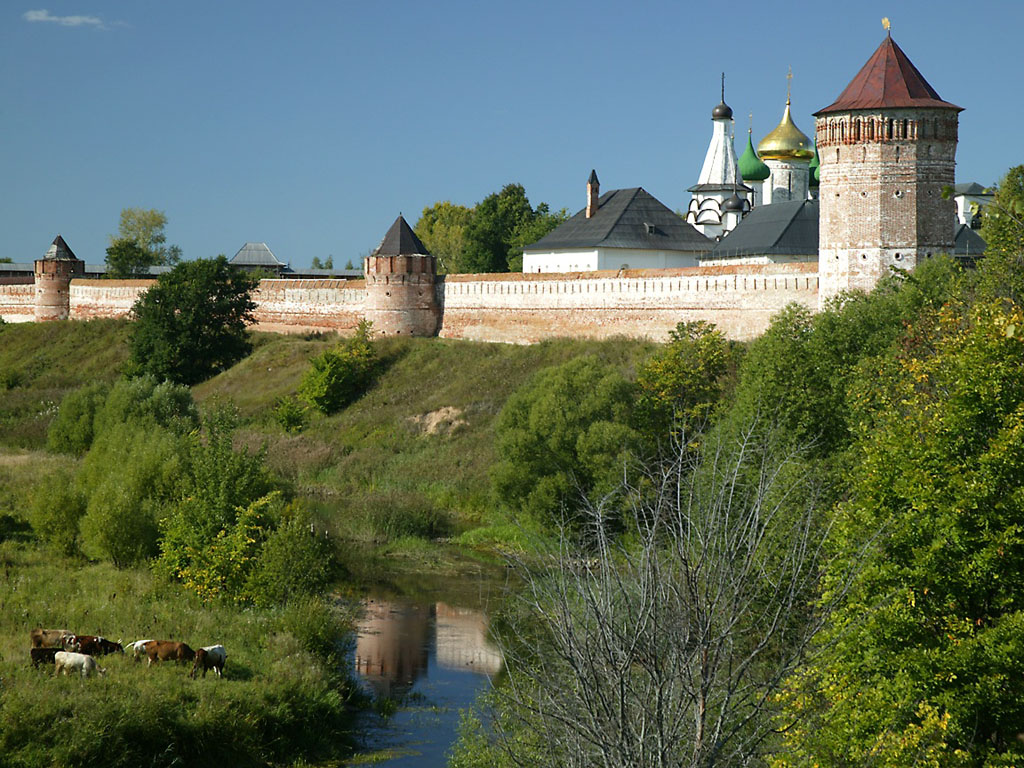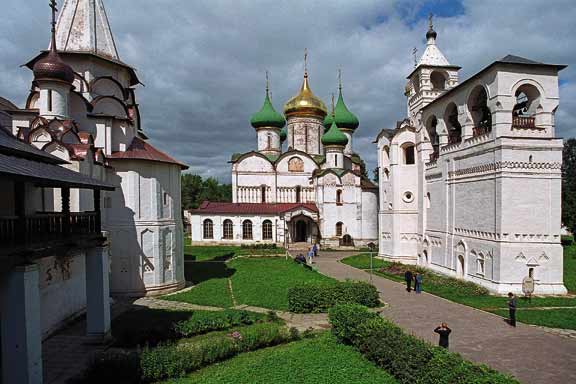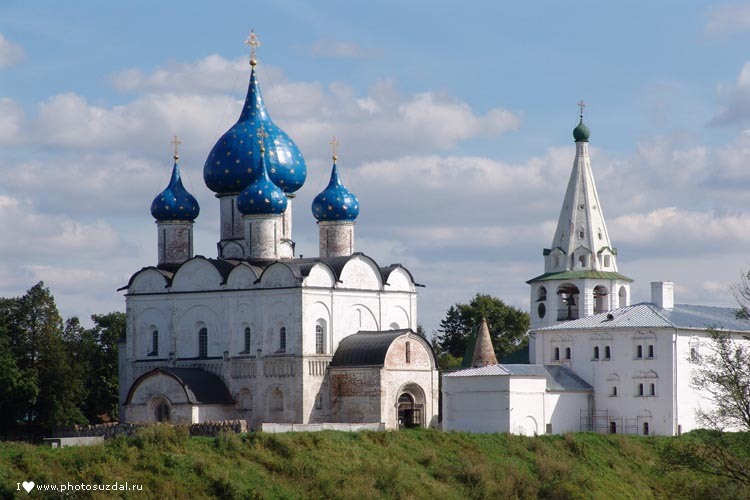
Suzdal is located on the river Kamenka 35 km north of Vladimir. It was first mentioned in the chronicles due to an uprising there in 1024, but was only a small settlement until the mid-11th century. The name shows its Fino-Ugric origin. Vladimir Monomakh’s son, Prince Yury Dolgoruky, made Suzdal his capital in 1125. But he built a new palace and fortress at Kideksha, 5 km from Suzdal, where the church of St Boris and Gleb still stands. After he died, Andrey Bogoliubsky moved the capital to Vladimir to escape the rebellious boyars. This increased the rivalry between the two towns. Suzdal was destroyed along with the other main Russian towns in 1238 by the Mongol invaders. By 1328 the rebuilt city was strong enough to lead in the struggle against the rising power of Moscow Finally Grand-Prince Vasiliy annexed it to Moscow. The city remained a religious center. During this period there were many monasteries founded. Among them were the Deposition of the Robe, the Holy Trinity, St Alexander, the Intercession of the Virgin (1364) and St Basil. In the late 17th and 18th centuries, wealthy merchants paid for 30 gorgeous little churches, which still adorn the town. Suzdal is special not just for its lovely old monasteries, convents and churches but also because they haven’t been strangled by the 20th century noise and pollution. Picturesque green town, where you can at the same time feel the Russian country life and enjoy walks around fairy tale dome convents. Inside Suzdal the atmosphere is as if nothing had changed since the nineteenth century. It remains a peaceful rural place, on low eminences above the winding Kamenka River, housing mostly comprised of one-storey wooden houses (izbas). Suzdal is uniquely calm among other Russian tourist cities, and the slightly unreal "living museum" atmosphere resulting from its protected status will no doubt surprise you.
From: http://www.select-a-room.com/view/russia/suzdal



Suzdal